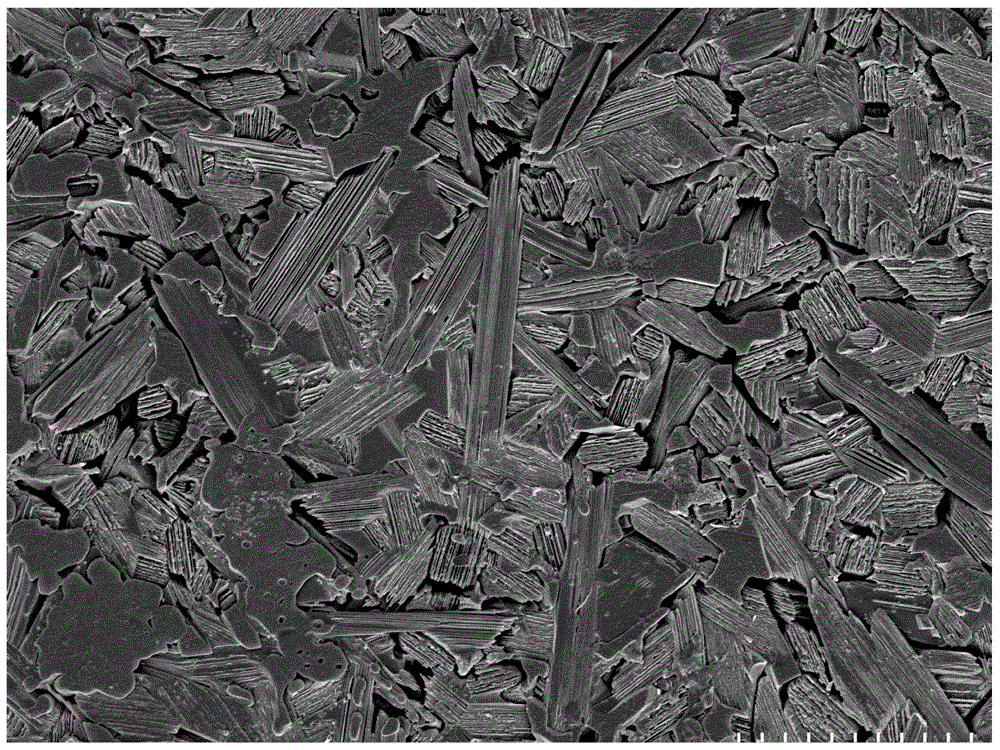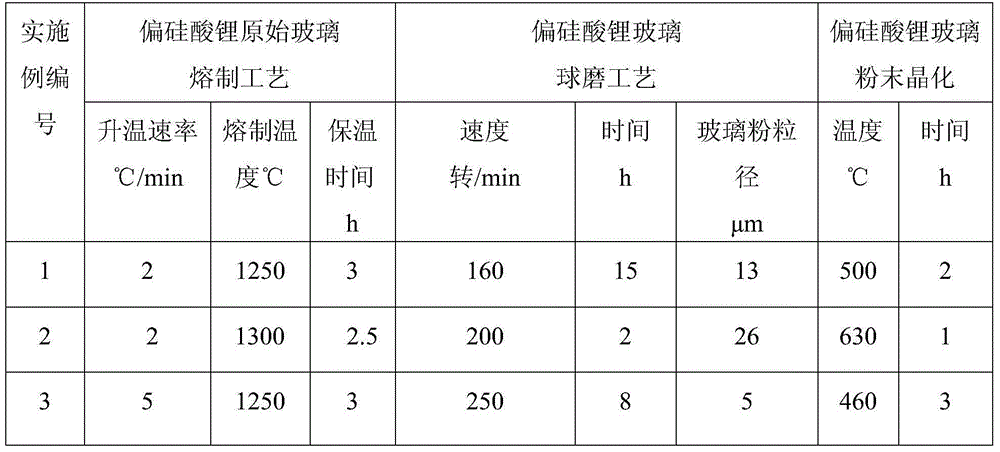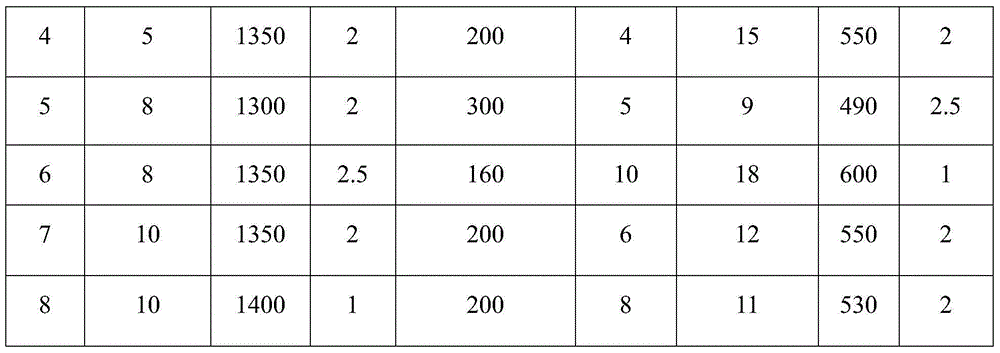Lithium disilicate microcrystalline glass material prepared by using hybrid reaction sintering method and method
A lithium disilicate and glass-ceramic technology, which is applied in the field of lithium disilicate glass-ceramic materials, can solve the problems of reducing color matching, difficulties, and toughening of melting methods, and achieves reduced production costs, excellent performance, and improved fracture toughness Effect
- Summary
- Abstract
- Description
- Claims
- Application Information
AI Technical Summary
Problems solved by technology
Method used
Image
Examples
Embodiment Construction
[0027] The present invention will be described in further detail below in conjunction with the accompanying drawings and specific embodiments.
[0028] The preparation method of the lithium disilicate glass-ceramic material prepared by the mixed reaction sintering method of the present invention comprises the following steps:
[0029] Step 1: According to the raw material composition ratio of the original lithium metasilicate glass, Li 2 O:SiO 2=1:1 (molar ratio) Weigh the oxide raw material, put the oxide raw material in a corundum jar and wet mix it for 2 hours, then use a rotary evaporator to dry the evenly mixed slurry, and then put it into a quartz crucible In silicon-molybdenum rod resistance furnace, heat up to 1200-1400°C at a heating rate of 2°C / min-10°C / min and keep it warm for 1-3 hours. The original lithium metasilicate glass powder obtained after ball milling at a speed of 300 rpm for 1 to 15 hours has a particle size of 5 to 30 μm; the process parameters of spe...
PUM
| Property | Measurement | Unit |
|---|---|---|
| particle size | aaaaa | aaaaa |
| flexural strength | aaaaa | aaaaa |
| flexural strength | aaaaa | aaaaa |
Abstract
Description
Claims
Application Information
 Login to View More
Login to View More - R&D
- Intellectual Property
- Life Sciences
- Materials
- Tech Scout
- Unparalleled Data Quality
- Higher Quality Content
- 60% Fewer Hallucinations
Browse by: Latest US Patents, China's latest patents, Technical Efficacy Thesaurus, Application Domain, Technology Topic, Popular Technical Reports.
© 2025 PatSnap. All rights reserved.Legal|Privacy policy|Modern Slavery Act Transparency Statement|Sitemap|About US| Contact US: help@patsnap.com



